
, , , . , , , .
In 1859, the science of solar physics really began with the largest outbreak in human history: the Carrington event. Before that, many people observed the Sun: they were engaged in counting and tracking sunspots, observing the differential speed of rotation of the Sun, establishing a potential relationship between solar activity and the Earth's magnetic field, and observing the aurora. When astronomers Richard Carrington and Richard Hodgson noticed a huge "white flare" in the Sun on September 1, 1859, it became clear that the Earth and the Sun were connected so strongly that we could not even imagine. Just 17 hours later, Earth was hit by the largest geomagnetic storm ever recorded, and worldwide reports of its aftermath were legendary. Knowing that these events happen regularly,are we ready for the inevitable? Here's what Erich Ratkamp wants to know by asking the following question:
“Coronal mass ejections, comparable to the Carrington event of 1859, could destroy the entire US power grid ... Can we recognize such emissions and issue warnings about them at least 24 hours in advance? Is there enough time to survive a Carrington-level event? If such an event happens tomorrow, can we handle it? "
When it comes to looming natural disasters, the best we can do is prepare for them. This is what the sun has prepared for us.
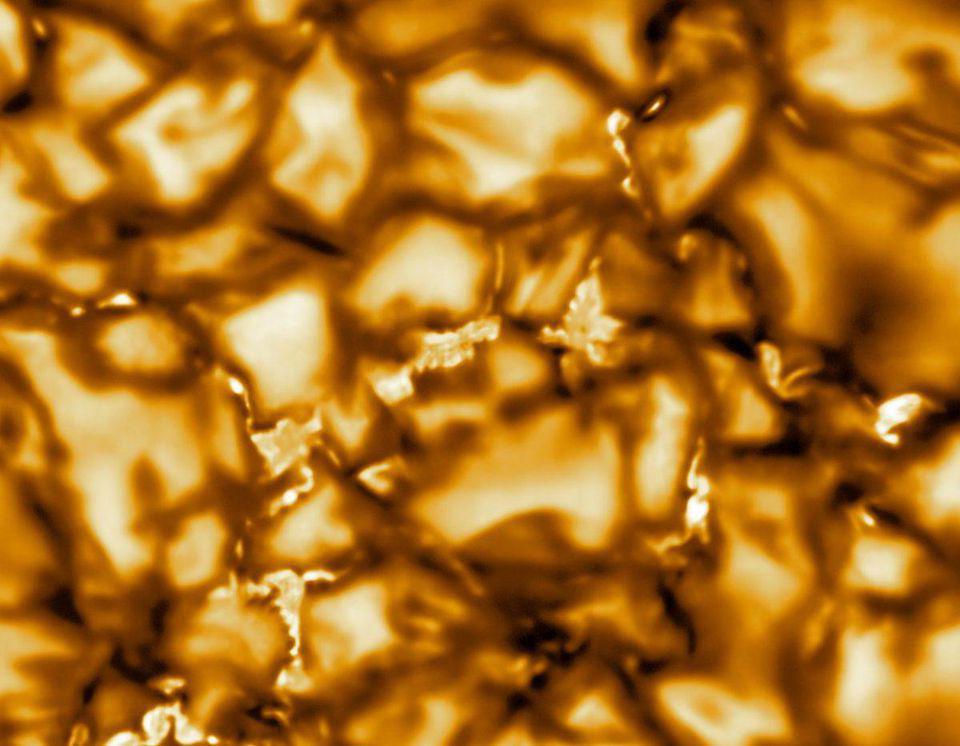
Fragment of the "first light" of the Inoue solar telescope, owned by the National Science Foundation. It shows Texas-sized heat cells on the Sun's surface at a higher resolution than ever before. For the first time, objects can be seen between cells with a resolution of only 30 km, which sheds light on the processes taking place inside the Sun.
The Sun is usually quite quiet and produces the same constant amount of energy with an accuracy of 99.9%. It rotates on its axis with a period of 25 days at the equator and 33 days at the poles, and also emits a constant stream of particles: the solar wind. Its central core reaches a maximum temperature of about 15 million K, but the edge of its photosphere is relatively cold - about 6000 K, and this is where the energy we receive comes from.
In addition, a thin and very hot plasma is separated from the photosphere: the Sun's corona, the temperature of which is hundreds of thousands of Kelvin, and their connection is provided by the chaotic irregular magnetic field of the Sun. However, sometimes sunspots appear on the Sun, which are relatively cool regions in its photosphere. There are magnetic connections between the Sun, the corona, and even other bodies in the solar system, such as the Earth. Solar flares, coronal mass ejections and other magnetic reconnection events associated with various processes can send streams of energy particles in certain directions.

A solar flare that triggers an ejection of matter into the solar system can trigger events such as a coronal mass ejection. Although it usually takes about 3 days for the particles to arrive, the most powerful emissions can reach Earth in less than 24 hours and can wreak havoc on our electronics and electrical infrastructure.
Under normal conditions, we can say the following about these fluxes of such particles:
- They are relatively slow and low-power, it takes about 3 days to overcome the distance from the Earth to the Sun
- They tend to fly around the Earth because they are freely scattered in space, and their chances of getting directly into the Earth are slim;
- , . , ;
It is important to note that the particles themselves do not pose a threat to biological organisms on the Earth's surface (such as ourselves). But this does not mean that we are immune to any harmful consequences of these processes.
If all goes wrong, the result can be dire. If a solar flare leads to a coronal mass ejection, if this ejection is high in energy, and if the particles rush directly to the Earth, and (one more thing) if the magnetic field of the ejected material and the magnetic field of the Earth have opposite polarities, then our planet will be inflicted maximum damage: infrastructure, electronics and more will be affected. This is almost certainly what happened 162 years ago when the infamous Carrington event took place.
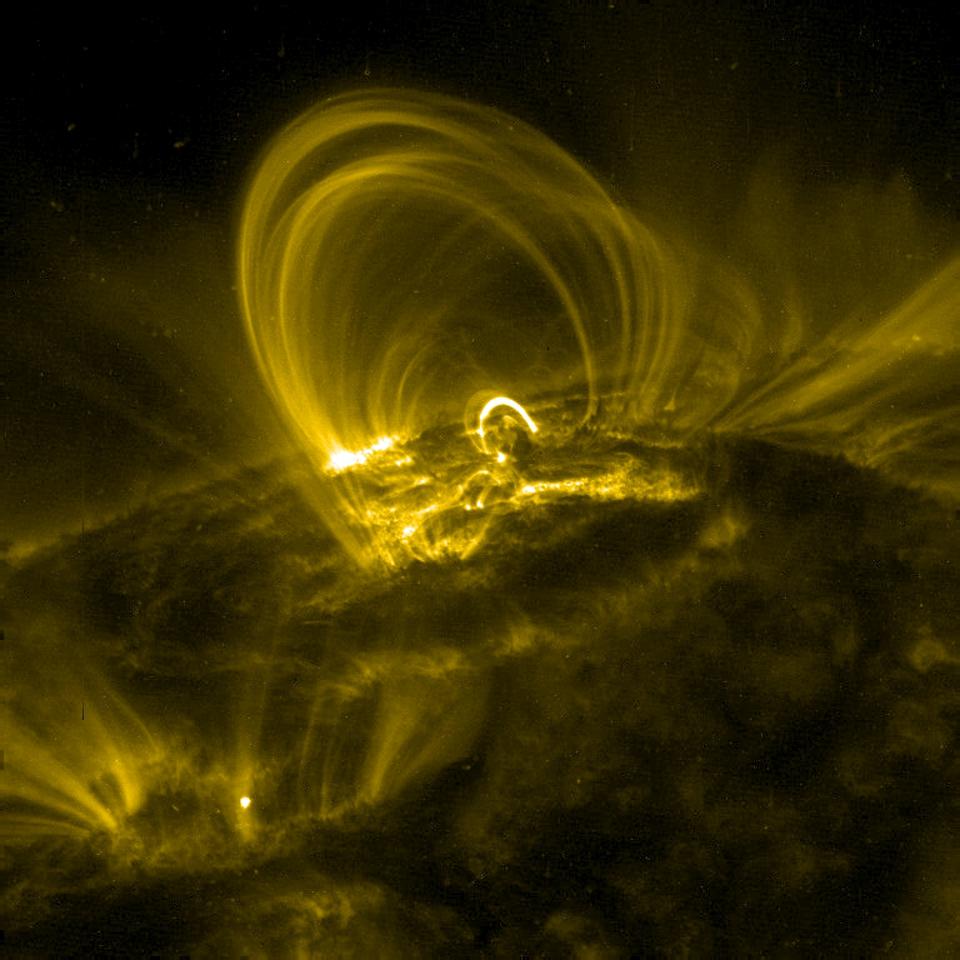
Solar coronal arches, such as those observed by NASA's Transition Region And Coronal Explorer (TRACE) satellite in 2005, follow the trajectory of the Sun's magnetic field. When these loops “break” in the right way, they can lead to coronal mass ejections that could potentially hit the Earth. A large ejection or solar flare could trigger a new type of natural disaster: Armageddon from flares.
Around noon on September 1, 1859, Richard Carrington was tracking a large irregular spot on the surface of the Sun when suddenly a bright flash appeared above it. Carrington described the flash as very bright and noted that it drifted to the right of the spot for about 5 minutes. Then, as suddenly as it had appeared, the flash completely disappeared.
About 18 hours later (3-4 times faster than a normal solar flare), the largest geomagnetic storm in human history occurred. The American miners woke up thinking it was dawn. In places where it was night, the auroras were so bright that you could read a newspaper in their light. A "green curtain" of auroras could be seen at many equatorial latitudes: they were reported by Cuba, Hawaii, Mexico and Colombia. And worst of all, our early electrical systems (such as the telegraph) were exposed to induced currents that caused damage, fires, and wild clicks of devices, even when the systems themselves were completely shut down.

, 14 2016 . – . .
The physics behind this is simple and daunting when you think about it. Charged particles that are emitted by the Sun and hit the Earth's atmosphere are not harmful in themselves, since the atmosphere can perfectly slow them down. But if a large number of such particles move at high speed, they will create their own magnetic fields - as is the case with any electric current. If these magnetic fields are strong enough, they can significantly alter the local magnetic field at the Earth's surface. If you change the strength and / or direction of the magnetic field passing through the loop or coil, this change in the magnetic field will result in an electric current.
Let me repeat this again: if the magnetic field changes in a loop or coil, an induced electric current appears. Humanity knew about this law long before the Carrington event: Faraday discovered it back in 1831 . But the world has changed a lot since the days of Carrington, as power grids, power plants and substations, energy transportation infrastructure, and even consumer, commercial and industrial electronics are full of loops and coils. The power of the induced currents, if we today experienced an event like Carrington's, would be literally astronomical.
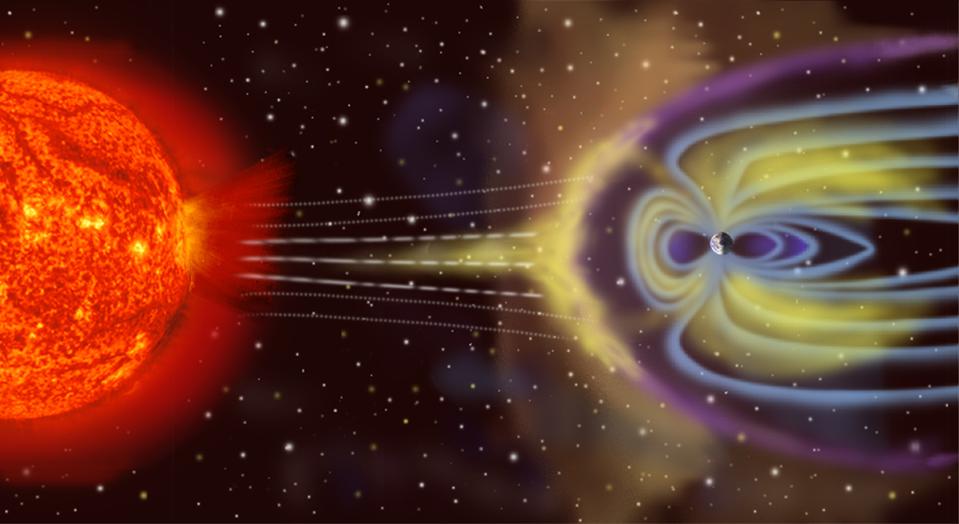
, . , , , . , , , .
Estimates of potential damage (assuming no measures are taken to mitigate it) have risen to 11-digit figures worldwide. Most countries' power grids will be completely destroyed. The best way to mitigate the effects of such a flash is to strengthen the grounding so that the large currents that would flow into the mains, instead go directly to the Earth. However, every time energy companies try to do this, the conductive substance used for grounding (such as copper) is stolen due to its material value.
As a result, we have ungrounded power plants and substations that will experience huge induced currents, which usually lead to fires with subsequent significant damage and destruction to infrastructure. We are not just talking about a multi-trillion dollar disaster (estimated at $ 2.6 trillion in damage to the United States alone ), we are talking about a huge amount of electricity being left without electricity for long periods of time (potentially years). Considering what happened in Texas recently(when freezing temperatures left many areas without electricity), there is a risk of extremely high casualties - many people need electricity to keep them alive.
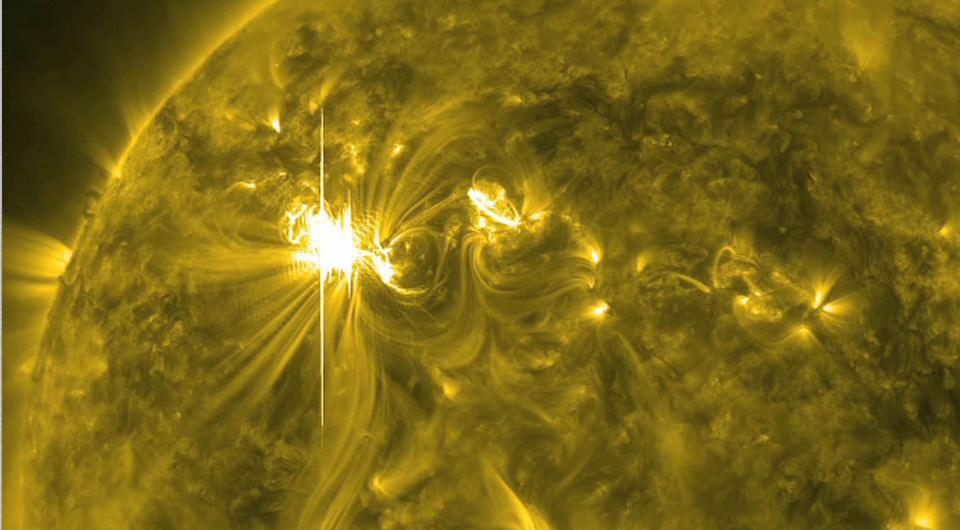
An X-class solar flare on the surface of the Sun in 2012: an event that was still much, much weaker in brightness and overall energy production than the 1859 Carrington event, but which could still cause a catastrophic geomagnetic storm if accompanied a coronal mass ejection, the magnetic field of which had the correct (or incorrect, depending on your point of view) polarity.
The Carrington event was not some massive ejection that happens every few million years. Many solar flares hit the Earth, some of which caused local damage to power grids. A series of solar storms in 1972 caused widespread disruptions to electrical and telecommunications networks, malfunctions of satellites, and even caused an accidental explosion of naval mines in Vietnam. A geomagnetic storm in 1989 caused a complete shutdown of Quebec's power transmission system. And a 2005 solar storm turned off the GPS network. These events may have been devastating, but they were just warning shots compared to what nature has in store for us.
In 2012, the Sun finally (for the first time since we developed instruments capable of sufficiently monitoring it) emitted a solar flare that was probably as powerful as the one that caused the 1859 Carrington event. It happened on July 23rd , and that's what saved us. The outbreak occurred in the same plane as the Earth's orbit, but we missed each other for nine days. As with the Carrington event, the particles traveled the distance to the Earth from the Sun in just 17 hours. If the Earth were on its way, the global damage caused could exceed the $ 10 trillion mark, not to mention the immeasurable loss of life.
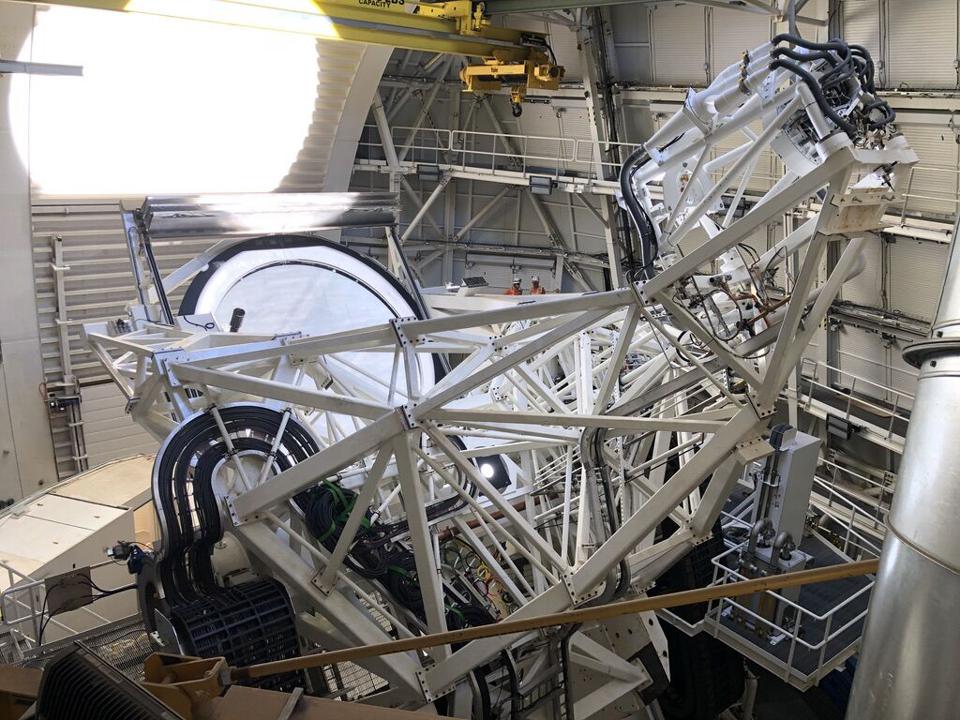
Sunlight shining through the open dome of the Daniel K. Inoue Solar Telescope (DKIST) telescope hits the main mirror and causes photons without useful information to bounce off it, while useful information is sent to instruments mounted elsewhere in the telescope.
However, most of us do not treat solar storms in the same way as hurricanes, tornadoes, earthquakes, tsunamis, or volcanic eruptions. While in today's electronics-dependent world, we must think of these phenomena in terms of disaster preparedness. With the arrival (just last year) of the Daniel K. Inoue solar telescope , we are finally ready to be alerted when a geomagnetic storm of catastrophic proportions threatens us.
This solar telescope works like a magnetometer that measures the Sun's performance. It is able to measure the magnetic field of the Sun and solar corona, which allows us to know if a coronal mass ejection directed towards Earth has a magnetic field opposite to the field of our planet at the moment. If we detect an outlier, we can take large-scale mitigation measures, including:
- Disconnection by power companies of their networks - in order to do everything correctly and responsibly, it takes about 24 hours for a gradual shutdown
- Disconnection and (if possible) grounding of stations and substations so that powerful induced currents do not penetrate into homes, businesses and industrial buildings and do not become causes of fires
- Publication of guidelines for residents of houses, which will talk about how to safely deal with such situations: turn off all household appliances and electronics, disconnect certain wires and systems, etc.

When a coronal mass ejection appears to propagate in all directions relatively equally from our point of view (this phenomenon is also known as an annular mass ejection), this is a sign that it is likely heading directly towards our planet. A flash directed to the side is more likely to fly past our planet, which is what we should all hope for.
The fastest solar flare ever to travel from the Sun to Earth reached us in just 14.6 hours, which means ideally we would like our reaction times to leave room for maneuver. However, the biggest danger lies in being completely unprepared, and we are very close to that. We have the rudiments of the infrastructure needed to detect and measure these events - not only the Inoue telescope, but also the Parker Solar Probe, as well as our satellites for monitoring the Sun located at the L1 Lagrange point into space, but this is not enough ...
In the worst case, the outbreak will occur during a cold snap that will affect the Northern Hemisphere in winter. This will cut off electricity in most developed countries, leaving billions of people without heat and electricity. The storage and distribution of food and water can be disrupted, leaving billions of people to survive on their own. Our satellite systems may also be disabled . Any system that relies on computerized collision avoidance maneuvers can trigger a collision chain reaction with satellites in low Earth orbit. If we fail to prepare, one event can set us back as a civilization decades ago.
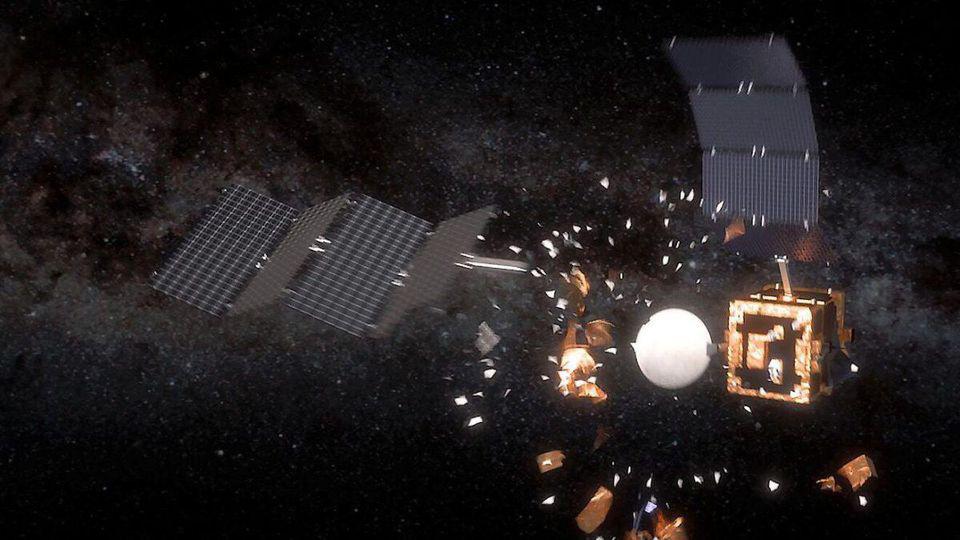
, , ~10 /. , , .
So what should we do to get ready? First, you need to establish early detection using ground and space observations of the Sun and particles moving from the Sun to the Earth. Ideally, this requires a network of heliophysical observatories on Earth, at the L1 Lagrange point in space and in close proximity to the Sun itself. We must prepare the power grids for complete blackouts and outages, which take less than ~ 14 hours to complete, as well as strengthen the grounding at stations and substations. We must create mandatory “safe” orbits for satellites so that electronics failures are not catastrophic, and we must develop contingency plans for citizens in the event of a Carrington-level flash heading towards Earth.
In fact, the threat is getting closer, its onset is only a matter of time. If we do nothing to prepare for the massive blowout, trillions of dollars in infrastructure damage and quite possibly a huge number of deaths can be expected. But if we can prepare our power grid, distribution system, and humanity for the inevitable, we can indeed effectively survive even a Carrington-level event. We just need to put in the effort and invest in prevention. Otherwise, we will be paying hard - for years or decades.
- Russia's first serial control system for a dual-fuel engine with functional separation of controllers
- In a modern car, there are more lines of code than ...
- Free Online Courses in Automotive, Aerospace, Robotics and Engineering (50+)
- McKinsey: automotive
